How does the gorgeous new sofa you’re admiring in the furniture store get there? What determines what it looks like, what fabric it’s upholstered in and how quickly it will get bought? Diana Sisto, Creative Director at Brentwood Classics, spoke recently at Stoney Creek Furniture’s Inside Out Home Show about the design process and how design trends are developed. Here are the highlights:
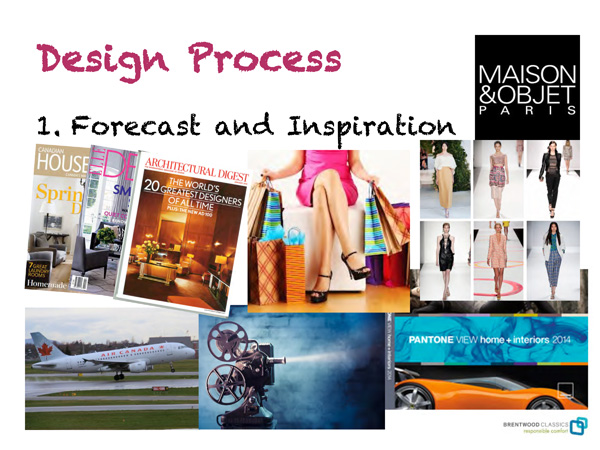
Image courtesy of Diana Sisto of Brentwood Classics.
STEP 1: Forecast & Inspiration. Fresh ideas come from multiple sources. Furniture design specialists look to emerging trends throughout popular culture – in fashion, movies, TV shows and car design, for example. You’ll see certain colours, influences, patterns and styles echoed in all the creative arts.
What makes a design trend noteworthy? There are 5 things that determine its success:
- Relative Advantage – Is the innovation an improvement over existing items in the same product class?
- Compatibility – How well will the innovation harmonize with the values/tastes of potential users?
- Complexity – Is the new item easy to use and understand?
- Trialability – How easy is it to try/test before buying?
- Observability – How visible is the innovation? How much is it seen?
What exactly is an innovation? In home design, it can be either one or a combination of these factors:
- New Fibre – like viscose or rayon
- New Finish – like glazing or distressing
- New/Unusual Colours – like fuchsia for an occasional chair, geometric prints for accessories, etc.
- Modification of Silhouette/Detail – new shapes for sofas, chairs, furniture legs, etc.
- New Application for Trims – new ways to add embellishment – edging, tassels, bordering, etc.
How quickly will you adopt an innovation?
A big part of it is simply your personality! Are you adventurous? Or are you more conservative? Or perhaps you are slow to change? – preferring that something is proven before you sign up. Connected to that, there are 3 risks to evaluate:
- Economic Risk – the risk of performance problems or that the price will fall after you buy it or that if you choose this piece, you have to forego others
- Enjoyment Risk – the risk of not liking your new purchase as much as expected or getting tired of it quickly
- Social Risk – the risk that your friends and family won’t like it
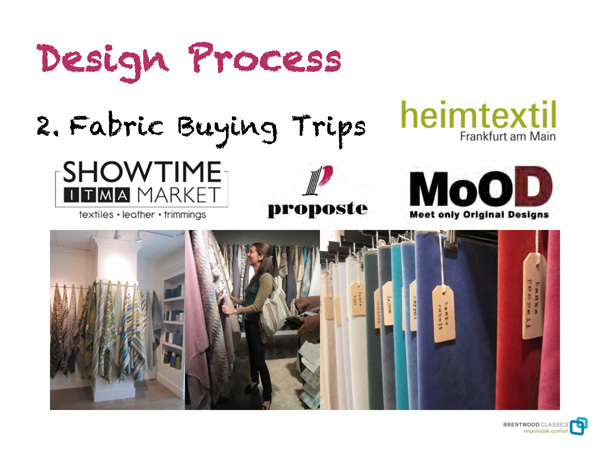
Image courtesy of Diana Sisto of Brentwood Classics.
STEP 2: Buying Trips. Before new home items can be designed and built, the raw materials must be sourced. For buyers this means travelling and searching for the perfect fabrics, materials, etc. to bring their visions to life!
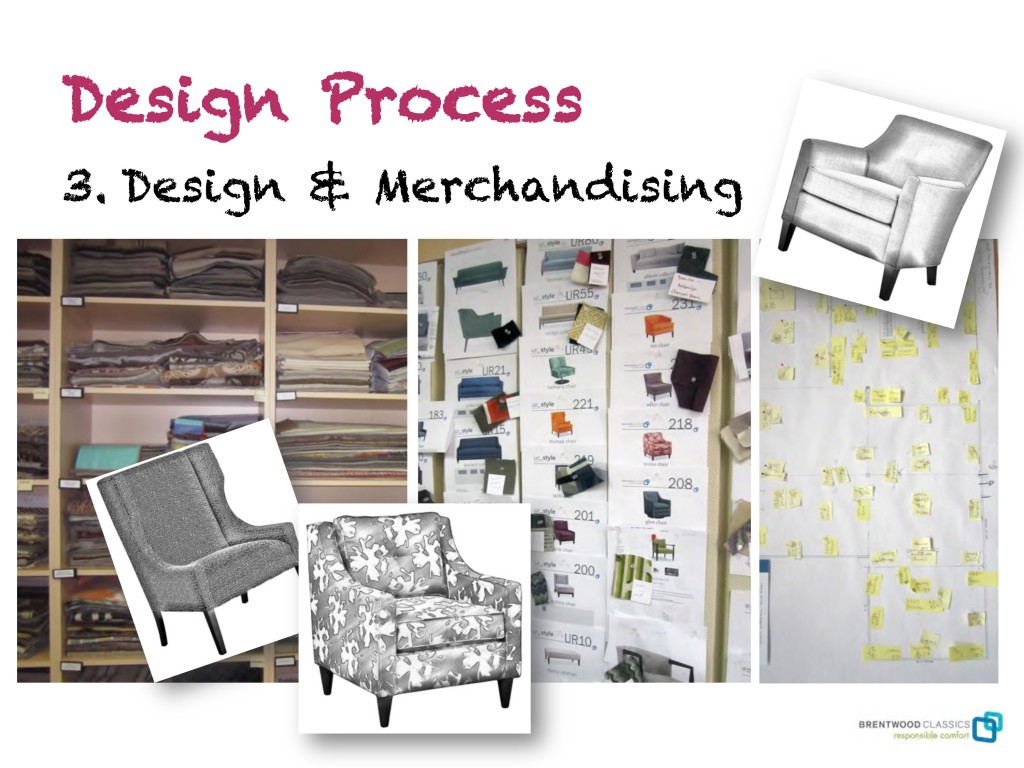
Image courtesy of Diana Sisto of Brentwood Classics.
STEP 3: Design & Merchandising. The actual design process is next. Experts develop the innovations and all the merchandising plans necessary to support and launch the new designs.
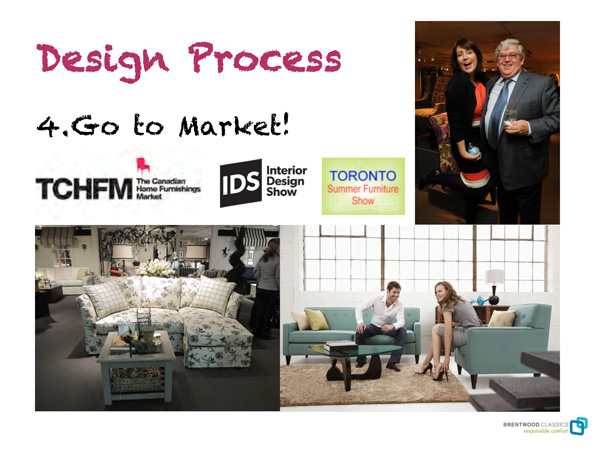
Image courtesy of Diana Sisto of Brentwood Classics.
STEP 4: Go to Market! This is it! Trade design shows, launches, promotions. New items are featured with the hope of being chosen by your favourite furniture store.
Of course, there’s also Step 5 – you see the sofa of your dreams and must have it – enjoy!
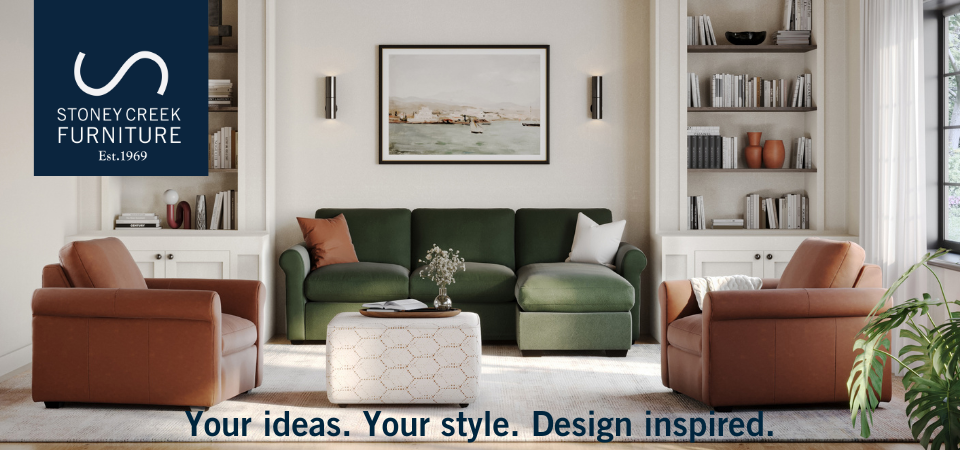
Leave a Reply